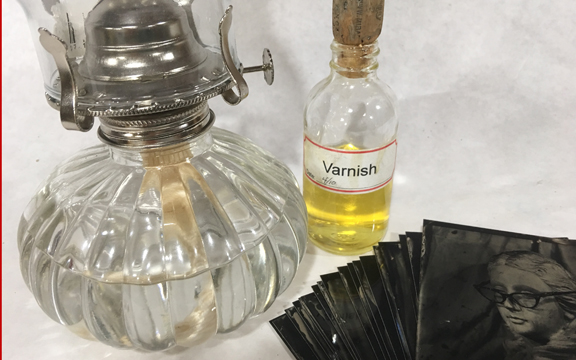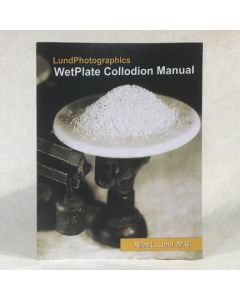Varnishing Plates

Varnishing Plates
The traditional method of finishing a plate is to varnish it after it's thoroughly dry. This is done by carefully pouring a sandarac varnish over the warmed plate and drying it over a lamp or heater. It's fairly delicate work and provides all sorts of opportunities to ruin a great plate. With this in mind, always always always (did I say always?) scan your plate before you varnish it. That way, you at least have a digital back up. In spite of the potential difficulties in learning the techniques of varnishing plates, it is a proven technique for sealing and preserving collodion images. It's worth the effort to master these skills.
Now, getting back to varnishing...First, pour a small amount of varnish into a pouring bottle and warm it in a beaker of water. Warm your plate over a hot plate, alcohol burner, or kerosene lamp (you're not looking for hot, just warm. If you can't touch it to the underside of your wrist, it's too hot) Keep the plate moving so it heats evenly. Pour the varnish as you would pour collodion, beginning with a circular pool of varnish in the middle of your plate, then tipping the plate to the left, then away, then to the right, then finally toward you and draining the excess back into a second bottle which you will then filter again before reuse. Blot the edges of the plate on a clean paper towel, while rocking the plate toward and away from you to remove any excess buildup of varnish from the edges of the plate. Heat the plate again over an alcohol burner until the varnish has set. Place the plate in a drying rack and allow it to cure for at least 24 hours.

